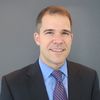Michael Kane is the chief human capital officer (CHCO) at the Department of Energy, where he advises and assists the secretary of energy and other officials in selecting, developing, training and managing a skilled workforce. Kane was recognized by the Office of Personnel Management as the 2011 CHCO of the Year. He previously worked as associate administrator for management and administration at the National Nuclear Security Administration. Kane spoke with Tom Fox, who writes the Washington Post's Federal Coach blog and is the director of the Partnership for Public Service's Center for Government Leadership.
Can you reflect on a critical event that contributed to shaping the leader you are today?
Early in my career, I had a boss who came into the office one day, sat us down and said, "At lunch today, I want you to go to four places and pick up job announcements." And, we would come back and my boss would go through those announcements and say, "You ought to apply for this one, this one, this one and that one." Then he would keep track of what you were applying for.
At the time, we were in the midst of the Reagan years when there were a lot of heavy workforce reductions. We didn't know it then, but my boss already knew his job would soon be gone. But he never said a word.
Years later, I found out that he was also calling people in the personnel offices, finding out who the supervisors were and making cold calls on our behalf. He truly embodied the tenant of servant-based leadership that says, "I will put the people who work for me first. I will make sure they are served." He really affected me.
What is a top human-capital challenge at the Department of Energy?
Our first challenge concerns budget-driven workforce management. At the Department of Energy, where the workforce is very mature, the only way to bring in new talent is to have a marriage between the chief financial officer and the chief human capital officer. As we go through the next five to six years, we're going to have to come together to determine best practices for how we hire and how we bring in new talent. This means looking at the budget equation in a sharper and more integrated fashion than we have before. We've got to be in sync with each other so that we know what big construction projects are going on, in what area of the country and when. That means looking out in the agency's strategic plan and the agency's budget not one year, but four to five years.
What role do senior leaders play in recruiting mission-critical talent, particularly in the STEM (science, technology, engineering and mathematics) fields?
At the Department of Energy, we require senior leaders to do at least two recruitment activities each year. Our executives are out talking to STEM students at their universities, community colleges and technical schools.
A second thing we're doing - which I'm particularly proud of - is participating in the Ambassadors Program with the Partnership for Public Service. Senior leaders are helping to select students who serve in our summer temporary employment program, who will return to their campuses and recruit for us. What we're seeing are students talking to students, and students talking to school administrators, about what we do. And after just one year in which we had seven ambassadors, the number of students who applied to our summer intern program tripled. Of the students we hired, 19 said they wanted to come here because of what they learned from our ambassadors.
A third thing we're doing is training executives to be teachers. Our goal is to advance the state of the knowledge about new and cutting-edge energy practices by having experts at our agency teach employees about them. So far, we've held about a half-dozen training sessions. About 60 Senior Executive Service (SES) members have signed up to teach sessions in the future. To my knowledge, this is one of the first times that such an initiative has been undertaken on a large scale.
Are there others who have taught you important leadership lessons?
One is Jim Goodnight. He's the president of SAS, a software and engineering company with record-breaking retention rates. Jim always stressed the importance of making employees "a working family." He said, "Make it your business as a manager to understand the conditions of your employees." Another person is Tina Jonas, who is actually a contemporary. She was the undersecretary of defense for financial management and a comptroller. She taught me to make sure that both the political and career executives not only understand the tensions and distinctions in their roles, but that they confront them.
The last person I will name is my father. He was a charter member of the SES and spent more than 40 years working in the federal government. He always said that federal service is a career of substance and a career of meaning. He said, "Don't take it just because it's a job. Take it because you believe in serving the people."
This post was originally featured on The Washington Post's website.
